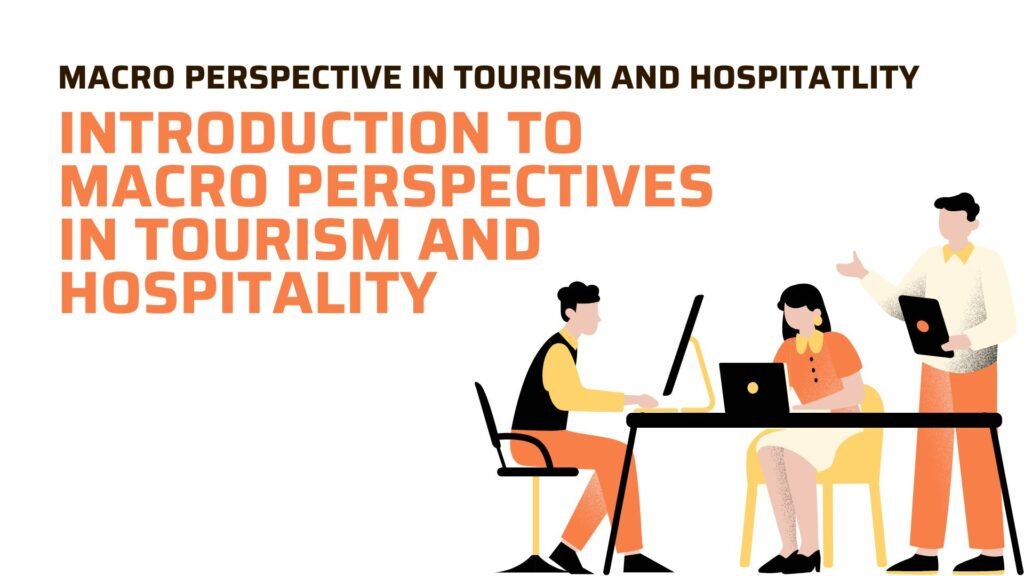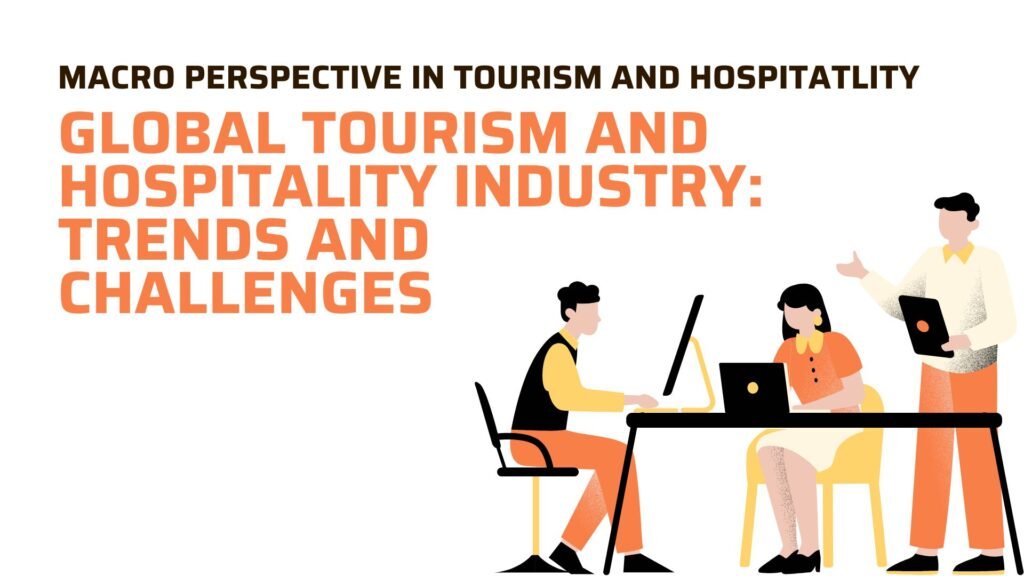
Effective tourism policies and planning are critical for guiding sustainable growth, enhancing the competitiveness of destinations, and balancing economic, social, and environmental priorities. These frameworks involve strategic decision-making at national and international levels to ensure that tourism benefits stakeholders equitably while preserving cultural and natural resources. This lesson examines key aspects of tourism policies and planning, including tourism master plans, public-private partnerships, and governance.
Tourism Policies: An Overview
Definition:
Tourism policies are strategic frameworks designed by governments and industry stakeholders to regulate, promote, and develop tourism activities within a region or nation. These policies aim to maximize tourism’s benefits while minimizing its adverse impacts.
Key Goals of Tourism Policies:
- Sustainable Development: Ensuring long-term viability by balancing economic growth with environmental preservation and social equity.
- Economic Contribution: Enhancing tourism’s role in GDP, employment, and foreign exchange earnings.
- Cultural Preservation: Safeguarding the cultural heritage and identity of host communities.
- Infrastructure Development: Facilitating investments in transportation, accommodations, and utilities to support tourism growth.
- Crisis Management: Preparing for and mitigating risks such as pandemics, political instability, or natural disasters.
Examples:
- Bhutan: Bhutan’s “High Value, Low Volume” tourism policy imposes high daily fees on tourists to limit footfall and preserve cultural and environmental integrity.
- Singapore: A comprehensive tourism strategy focuses on creating iconic attractions like Marina Bay Sands while promoting heritage conservation and green spaces.
Tourism Planning: Strategies for Development
Tourism planning involves systematic approaches to organize and manage tourism activities effectively, ensuring that growth aligns with broader national and international objectives. This process is often encapsulated in tourism master plans.
Tourism Master Plans
Definition:
A tourism master plan is a comprehensive document outlining long-term strategies for the development, promotion, and management of tourism in a specific area.
Key Components:
- Situation Analysis: Assessing current tourism assets, challenges, and opportunities.
- Goals and Objectives: Setting clear, measurable targets for tourism growth and sustainability.
- Infrastructure Development: Planning for transport, utilities, and accommodations to meet future demand.
- Sustainability Strategies: Incorporating eco-friendly practices and resource management.
- Marketing and Promotion: Developing branding strategies to position the destination competitively.
- Stakeholder Engagement: Involving public agencies, private businesses, and local communities in decision-making.
Examples:
- Dubai Tourism Vision 2025: Aims to attract 25 million visitors annually by investing in luxury infrastructure, enhancing cultural offerings, and hosting global events like Expo 2020.
- Kenya’s Tourism Master Plan: Focuses on diversifying tourism products beyond wildlife safaris to include cultural and adventure tourism.
Benefits:
- Provides a clear roadmap for growth and sustainability.
- Aligns tourism activities with national development goals.
- Enhances coordination among stakeholders.
Challenges:
- Implementation often requires substantial funding and political will.
- Balancing diverse stakeholder interests can be complex.
Public-Private Partnerships (PPPs)
Definition:
Public-private partnerships involve collaboration between government agencies and private sector entities to develop and manage tourism projects.
Importance of PPPs:
- Resource Sharing: Governments provide policy support and infrastructure, while private entities bring expertise, capital, and operational efficiency.
- Risk Management: Sharing risks between public and private sectors enhances project feasibility.
- Innovation: Private sector involvement often drives technological advancements and creative solutions.
Examples:
- Costa Rica: Collaborations between government agencies and eco-tourism operators have helped establish Costa Rica as a global leader in sustainable tourism.
- Thailand: Partnerships between the government and private airlines have expanded air connectivity to remote regions, boosting local tourism.
Challenges:
- Ensuring equitable distribution of benefits between public and private stakeholders.
- Maintaining transparency and accountability in large-scale projects.
Governance in Tourism
Definition:
Governance in tourism refers to the systems, policies, and institutions that regulate and manage tourism development and activities. It encompasses national governments, regional authorities, and international organizations.
Key Aspects of Tourism Governance:
- Policy Formulation: Establishing frameworks that align tourism growth with national priorities and sustainability goals.
- Regulation and Oversight: Ensuring compliance with environmental, social, and safety standards.
- Stakeholder Coordination: Promoting collaboration among government bodies, private businesses, non-governmental organizations (NGOs), and local communities.
- Funding and Incentives: Allocating resources for tourism development and offering financial incentives for sustainable practices.
Examples of Governance Models:
- National Tourism Boards: Organizations like VisitBritain or Tourism Australia oversee national branding, promotion, and development strategies.
- Regional Collaboration: The European Union facilitates cross-border tourism through visa-free travel under the Schengen Agreement.
- International Organizations: The United Nations World Tourism Organization (UNWTO) sets global standards for sustainable tourism and fosters international cooperation.
Challenges:
- Fragmented governance can lead to inefficiencies and conflicting priorities among stakeholders.
- Corruption or lack of transparency may undermine tourism development initiatives.
Key Challenges in Tourism Policies and Planning
- Over-Tourism:
- Poorly managed tourism growth can lead to overcrowding, environmental degradation, and cultural dilution.
- Example: Venice faces challenges managing mass tourism, resulting in new policies such as visitor caps and entry fees.
- Funding Constraints:
- Developing nations may lack the financial resources to implement ambitious tourism plans.
- Example: Infrastructure development in sub-Saharan Africa often depends on external aid or foreign investment.
- Balancing Interests:
- Ensuring that policies cater to diverse stakeholders, from multinational corporations to local communities, requires careful negotiation.
- Adapting to Crises:
- Tourism plans must address risks such as pandemics, natural disasters, or political instability.
- Example: The COVID-19 pandemic prompted many countries to revise their tourism strategies to focus on domestic travel and health protocols.
Conclusion
Tourism policies and planning are critical tools for guiding sustainable and inclusive growth in the tourism sector. By creating comprehensive tourism master plans, fostering public-private partnerships, and ensuring robust governance, stakeholders can balance economic benefits with social equity and environmental preservation. Effective policies and planning enable destinations to adapt to changing market dynamics, mitigate challenges such as over-tourism, and build resilience against future crises. Strategic collaboration among governments, businesses, and communities is essential for realizing tourism’s potential as a driver of global development and sustainability.


Looking for some tips and tricks on some new games. Stumbled across blogmcgames.com. Hopefully, it’s got some strategy guides and insider info! Take a peek: blogmcgames
QQBET88 is my go-to spot for quick bets. Fairly straightforward deposit and withdrawals too. No complaints. Definitely worth checking out qqbet88. Get your game on!
Alright, been hanging out at luk88club. Things here get pretty hot! If you need some fun, check this out! luk88club
8959betvip – Got an invite to check this VIP thing out. Honestly? Pretty snazzy. Higher limits and, like, dedicated support. If you’re betting big, might be worth looking into? It’s right here: 8959betvip